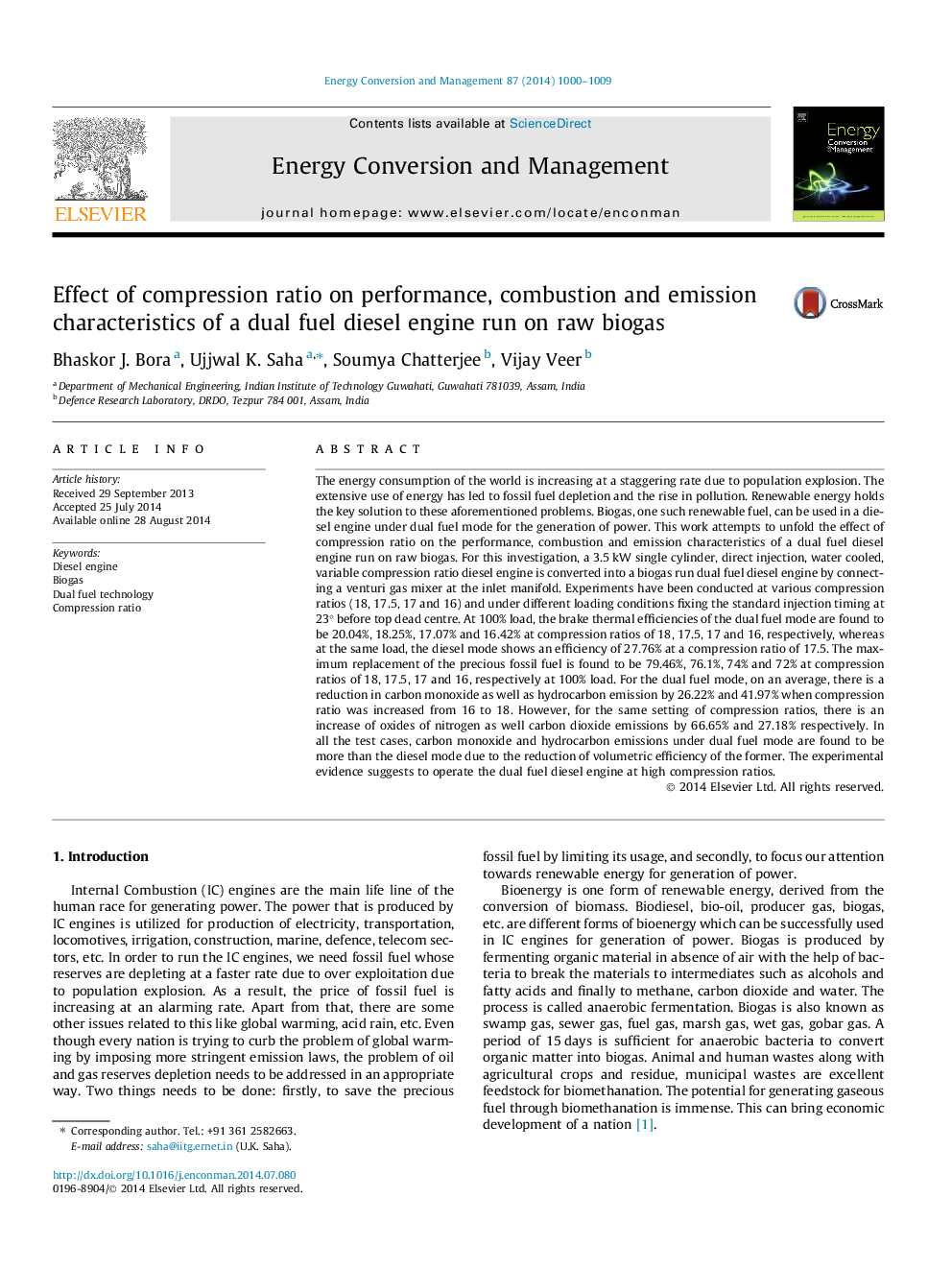| کد مقاله | کد نشریه | سال انتشار | مقاله انگلیسی | نسخه تمام متن |
|---|---|---|---|---|
| 760684 | 1462875 | 2014 | 10 صفحه PDF | دانلود رایگان |
• Maximum brake thermal efficiency of 20.04% was obtained in dual fuel mode.
• Compression ratio of 18 produced the maximum brake thermal efficiency.
• Maximum replacement of diesel was found to be 79.46% at a compression ratio of 18.
• CO gets reduced by 26.22% with the increase of compression ratio from 16 to18.
• HC gets reduced by 41.97% with the increase of compression ratio from 16 to18.
The energy consumption of the world is increasing at a staggering rate due to population explosion. The extensive use of energy has led to fossil fuel depletion and the rise in pollution. Renewable energy holds the key solution to these aforementioned problems. Biogas, one such renewable fuel, can be used in a diesel engine under dual fuel mode for the generation of power. This work attempts to unfold the effect of compression ratio on the performance, combustion and emission characteristics of a dual fuel diesel engine run on raw biogas. For this investigation, a 3.5 kW single cylinder, direct injection, water cooled, variable compression ratio diesel engine is converted into a biogas run dual fuel diesel engine by connecting a venturi gas mixer at the inlet manifold. Experiments have been conducted at various compression ratios (18, 17.5, 17 and 16) and under different loading conditions fixing the standard injection timing at 23° before top dead centre. At 100% load, the brake thermal efficiencies of the dual fuel mode are found to be 20.04%, 18.25%, 17.07% and 16.42% at compression ratios of 18, 17.5, 17 and 16, respectively, whereas at the same load, the diesel mode shows an efficiency of 27.76% at a compression ratio of 17.5. The maximum replacement of the precious fossil fuel is found to be 79.46%, 76.1%, 74% and 72% at compression ratios of 18, 17.5, 17 and 16, respectively at 100% load. For the dual fuel mode, on an average, there is a reduction in carbon monoxide as well as hydrocarbon emission by 26.22% and 41.97% when compression ratio was increased from 16 to 18. However, for the same setting of compression ratios, there is an increase of oxides of nitrogen as well carbon dioxide emissions by 66.65% and 27.18% respectively. In all the test cases, carbon monoxide and hydrocarbon emissions under dual fuel mode are found to be more than the diesel mode due to the reduction of volumetric efficiency of the former. The experimental evidence suggests to operate the dual fuel diesel engine at high compression ratios.
Journal: Energy Conversion and Management - Volume 87, November 2014, Pages 1000–1009
